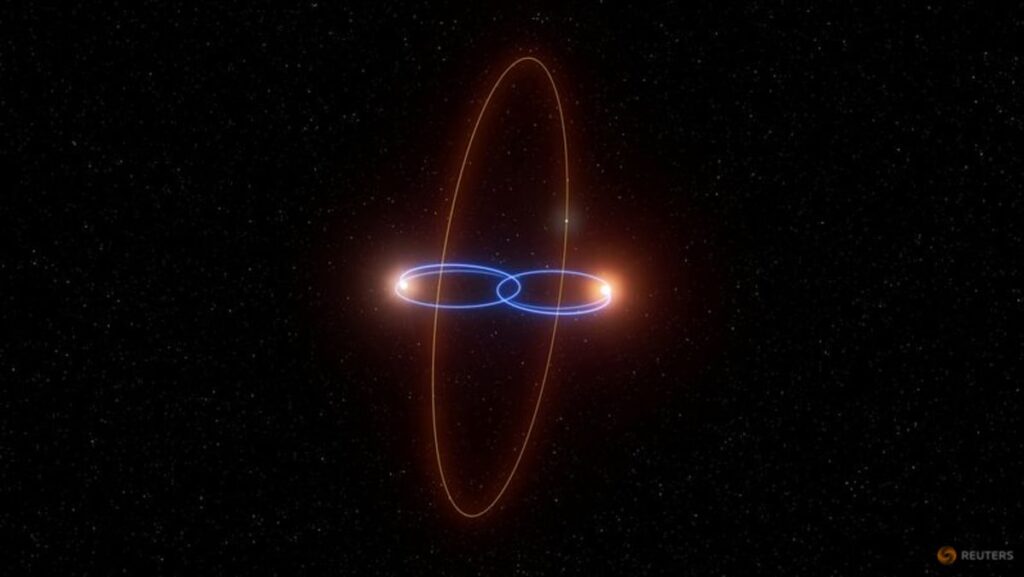WASHINGTON: In a memorable image from the 1977 film Star Wars, the young hero Luke Skywalker gazes at two suns setting above the horizon on his desert planet Tatooine. Astronomers since then indeed have discovered worlds, called circumbinary planets, orbiting two stars.
But for sheer exoticism, it would be hard to top a newly described circumbinary planet located relatively nearby in our Milky Way galaxy. It orbits not two stars but two brown dwarfs – celestial objects too small to be a star and too big to be a planet. And its orbit is unlike any other such planet on record.
Brown dwarfs could be considered wannabe stars that during their formative stages did not reach the mass necessary to ignite nuclear fusion at their core like a star. But they are more massive than the biggest planets and are modestly luminous.
Using the European Southern Observatory’s Chile-based Very Large Telescope, researchers have found evidence of a planet roughly 120 light-years away – probably a gas planet at least four or five times the mass of Earth – orbiting two brown dwarfs, each about 35 times more massive than Jupiter. A light-year is the distance light travels in a year, 9.5 trillion km. Jupiter is our solar system’s largest planet.
The two brown dwarfs are gravitationally bound and orbit near to each other – as close as just 4 per cent of the distance between Earth and the sun. The planet, named 2M1510 (AB) b, orbits around this pair. Another brown dwarf is present in this system, but is too far away – about 250 times the distance between Earth and the sun – for its gravitational pull to measurably disturb the other two.
Of the approximately 5,800 planets beyond our solar system – called exoplanets – confirmed to date, only 16 are circumbinary. And until now, none of those were found to be orbiting brown dwarfs, rather than regular stars.
The nature of this planet’s orbit also is unique. Rather than following the plane established for the orbit of the two brown dwarfs, the planet instead orbits almost nearly perpendicular from the plane – called a polar orbit – in a journey lasting at least 100 days.
“A satellite on a polar orbit around the Earth is one that would pass over the north and south pole. It would therefore be on an orbit that is inclined at 90 degrees to the rotation axis of the Earth,” said Thomas Baycroft, a doctoral student in astronomy at the University of Birmingham in England and lead author of the study published in the journal Science Advances.
No planet in our solar system has a polar orbit. The several exoplanets known to follow such a path orbit only a single star.
When two stars, or in this case two brown dwarfs, orbit each other, it is called a binary system, like the fictional one in Star Wars. The view by an observer from this planet, however, would be unlike the one that Luke Skywalker saw.
“This would be different from the Tatooine image. Both brown dwarfs would be identical and red. Since they are brown dwarfs they are fainter than the sun in general, though how bright they would appear in the sky also depends on how close the planet is to them,” Baycroft said.
These binary brown dwarfs each have a mass approximately 4 per cent that of the sun and are only about 0.1 per cent as luminous.
“This appears like an exotic configuration for a planetary system. Probably the most important discovery since the first exoplanet has been how diverse planetary systems are. They seem to defy our expectations, which is great – they present a fantastic opportunity to learn,” said University of Birmingham astrophysicist and study co-author Amaury Triaud.
While scientists previously had hypothesised the existence of exoplanets in a polar orbit around a binary system, this is the first good evidence of that, Triaud said.

